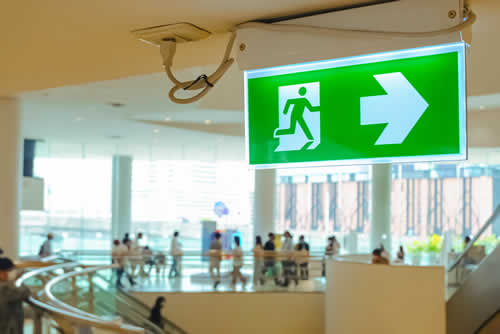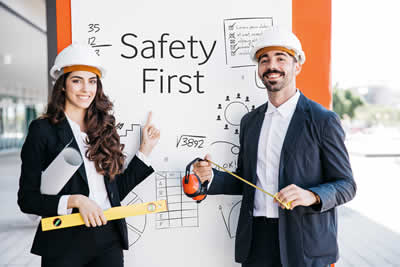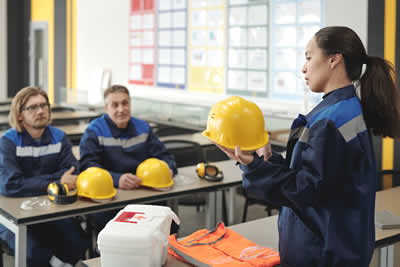Emergency readiness isn’t a term most of us are familiar with. But it’s probably implanted to some extent in every workplace. It’s about having people with the ability to handle emergencies effectively: in other words, defining what kinds of risks exist, and having resources to cover them.
Obviously, this reduces the likelihood of legal problems if accidents occur, but it also boosts workplace safety, staff morale and efficiency.
Proper training reduces the risk of injuries and disruptions, and this helps to build a proactive safety culture. And as confidence grows, so does people’s ability to protect both themselves and teammates. Prioritizing this also creates a more resilient and secure environment for everyone.

Understanding the Basics of Emergency Readiness
As you will surely agree, it’s an
essential safety feature in any workplace. If you adopt a comprehensive approach, it will include hazard identification, planning responses, and providing the necessary equipment.
Identifying Potential Hazards
The first job is to conduct a thorough assessment of the workplace to spot potential hazards. So, identify obvious physical dangers, like faulty wiring or slippery floors. And also look out for environmental risks like or fire hazards or, if relevant, chemical spills.
Create a list of these potential threats. Involve employees in the process so you get multiple viewpoints. Regular walkthroughs with checklists will help maintain everyone’s focus on safety.
And documentation is key! Keep detailed records of all identified hazards and update them regularly. This will keep abreast of changes and create reference points for action.
Designing Effective Response Plans
Once hazards are identified, set up detailed response plans. These should include step-by-step actions, so there is clarity and calm when needed. For instance, in the event of a power outage, having an
emergency fuel delivery plan will guarantee that essential equipment remains operational.
And prioritize simple language to avoid confusion – keep it readable and ban the use of jargon!
Involve trained personnel in designing these plans, which will maximize the effectiveness of your strategies. And schedule periodic training sessions to familiarize all employees with the plans, so everyone knows their role.
Visual aids like maps or diagrams marking evacuation routes are extremely helpful. And make sure you position them in highly visible locations around the building so there are no dramas if evacuation is needed.

Essential Equipment
Having the right equipment is a complete no-brainer! Items like fire extinguishers, first-aid kits, and emergency lighting must be available and easily accessible. And don’t forget to maintain them…
Conduct routine inspections and replace any damaged or expired items immediately. Train employees on how to use every item of equipment. They’ll not only be more capable – and confident – but they’ll buy in to the policy, too.
A checklist of necessary equipment will help to maintain an organized approach to stocking and replacing essential items.
Creating a Culture of Safety
As you can see from what we’ve said, building a
safety-focused environment requires solid training and inspiring staff involvement.
Training Programs and Drills
All training programs must be effective! Core policies need clear communication so that everyone understands them. For example, in regions like Miami, Florida, the risk of hurricanes is high, so tailoring emergency readiness training to take account of natural disasters is essential. And regular courses and drills, such as fire or evacuation exercises, provide practical experience and prevent it being seen as a theoretical matter.

Tailored sessions for specific roles will use interactive formats like simulations and workshops to increase engagement. Feedback from participants can make these programs more tailored – and relevant.
Providing resources like handbooks or online materials is a great way to reinforce the lessons learned. And make sure that training is ongoing so you keep up with new safety standards or potential threats.
Ultimately, if your programs are well-structured, your employees will be able to respond swiftly and confidently in emergencies.
Employee Participation and Contribution
As with all management activity, staff participation must be encouraged wherever practical. If employees feel welcome to share their concerns or suggest improvements, they will, naturally, have a sense of ownership and responsibility. And this will inevitably help to identify overlooked hazards and create fresh approaches to solutions.
Set up safety committees or teams comprising members from different backgrounds. And by holding regular meetings, you’ll keep safety at the forefront of people’s minds. When people contribute in a meaningful way, recognize this with acknowledgements and even awards. Something like “suggestion of the month” is guaranteed to spark interest, especially if it comes with a $50 payment!
When you create an open feedback loop, you’ll get a much more dynamic safety culture. Active engagement of staff can only lead to heightened vigilance – and an environment where everyone feels secure and valued.
Responding to Emergencies
When workplace emergencies arise, swift and informed actions are vital. Sometimes they make the difference between life and death. And if people are equipped with the right skills, they will manage medical needs, ensure clear communication, and follow post-incident procedures effectively.
First-Aid and Medical Response
The need to have proper first-aid in place is obvious. But also make sure that people know the location of first-aid kits and ensure they’re fully stocked. And of course, regularly updating your CPR and first-aid certifications is critical. Don’t forget to be aware of any specific medical needs your staff might have. This could include using an EpiPen or operating an automated external defibrillator (AED). Not much use if they’re missing or defective…
 Quick Tips:
Quick Tips:
Knowing these steps can make a big difference during an emergency:
- Assess the situation: Always check before administering aid
- Call for professional help: Dial emergency services immediately if needed
- Keep calm and provide care: Ensure the injured party is stable and safe until help arrives
Communication Protocols During Emergencies
Clear communication prevents unnecessary escalation. Communication protocols must detail who informs whom and how messages are conveyed. For example, a designated safety officer should lead communications, with the stated objective that everyone gets the same information … and quickly.
Steps for Effective Communication:
Effective communication is about making sure everyone knows what to do and where to go without confusion or delay.
- Use clear and direct language to avoid misunderstandings
- Use multiple channels like overhead announcements, text alerts, and emails to ensure everyone is reached
- Regular drills: Conduct routine drills to practice communication
Post-Incident Procedures
Once an emergency is resolved, the next steps are vital in ensuring safety and learning from what happened:
- Debrief with team members to gather firsthand accounts
- Document every detail in an incident report
- Review protocols and make necessary updates to them
In Conclusion
After you’ve read this, we’re sure you’ll agree that emergency readiness training is essential for a safer, more secure workplace. And the process is simple. You simply need to follow it. This means identifying potential hazards, designing effective response plans, and equipping staff with the right skills and tools.
If this is treated with the seriousness it deserves, any organization will significantly reduce the risk of emergencies, and ensure effective action if and when they happen. As we say, it’s a no-brainer really…




























